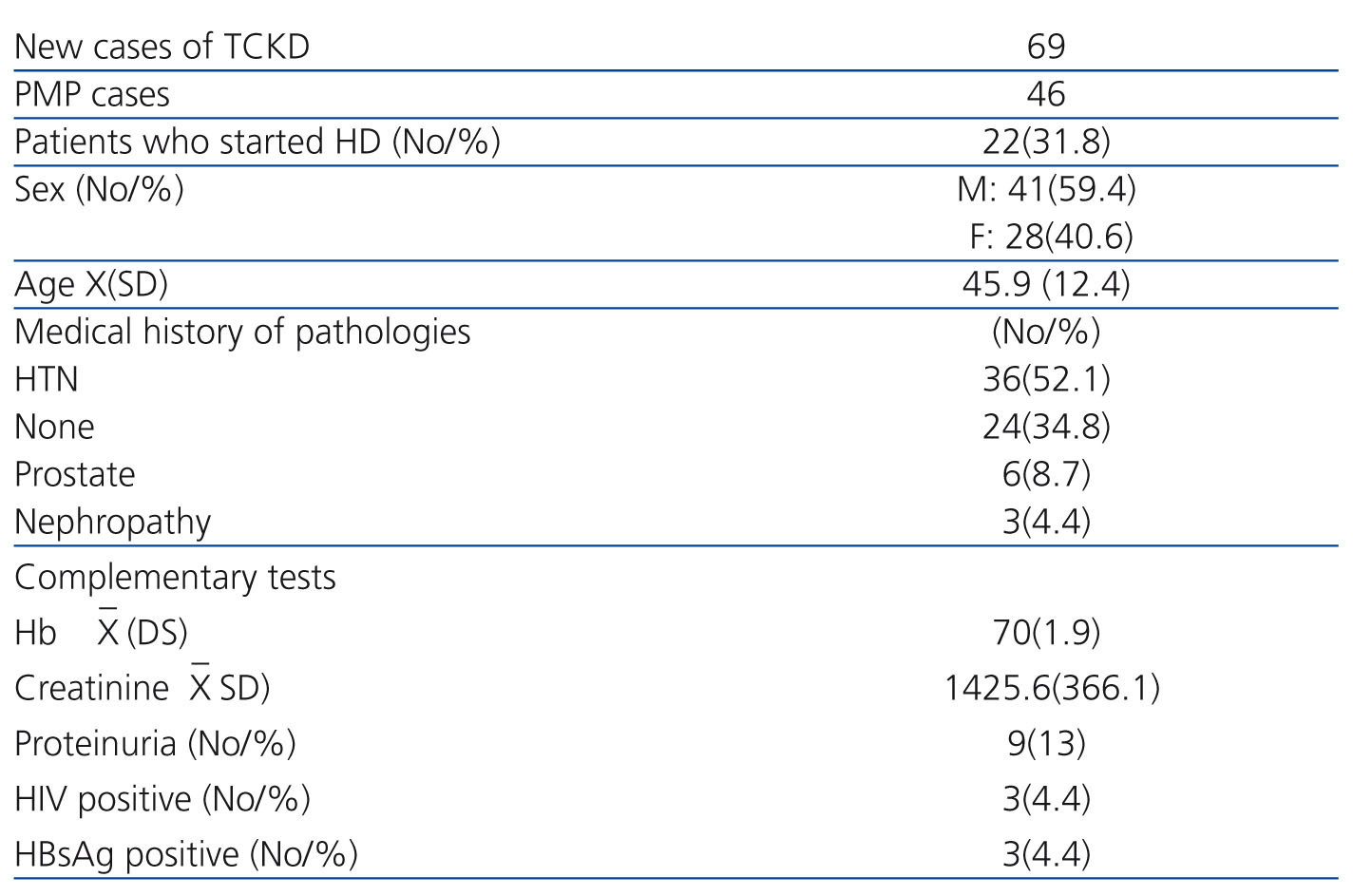Terminal chronic kidney disease (TCKD) is an important issue for public health, given its high incidence, prevalence, morbidity and mortality and socioeconomic cost.1
No reliable statistics exist in Africa concerning the incidence of TCKD and the South African Dialysis and Transplant Registry only includes patients who are eligible for transplant. Therefore, the availability of dialysis and transplants is extremely variable with a treatment rate that fluctuates in the north between 30 and 186.5 per million population, depending on the programmes in the other countries, the availability of funds and donors.2
In October 2006 in Gambia, haemodialysis was started on patients with TCKD through donations received from other countries, as well as through the human resources aid offered by Cuba, which was a step forward in health services. The possibility of receiving this therapeutic treatment was provided to some patients who would have previously had to be transferred to Senegal.
This study shows, for the first time, statistical data of the new cases diagnosed with TCKD in Gambia with Cuban medical cooperation. A cross-sectional descriptive study was carried out on 69 TCKD patients who required renal replacement therapy in the Royal Victoria Hospital (Banjul) in 2009. The patients’ characteristics are presented in Table 1.
The authors consider that the incidence of this disease in Gambia is much higher, since this study only deals with the patients diagnosed in the Royal Victoria Hospital of the capital city, which only provides service to a part of the population, leaving many other TCKD patients in the rest of the country with or without confirmed diagnosis who were not included in the research statistics but who would undoubtedly increase considerably the real number of incidents with TCKD in the country.
Nevertheless, it is a situation that is particular to Gambia, since the haemodialysis services are free with access for everybody, independently of their economic means. However, it only has five artificial kidneys, which does not satisfy demand and explains why only 31.8% of patients received renal replacement treatment. This limitation in material resources means that it is necessary to select people for haemodialysis, with those who have low life expectancy, the elderly, those who cannot travel to the hospital at least twice a week to receive treatment and those who are hepatitis B-positive or HIV positive being excluded.
The average age was relatively low if we take into account the fact that there is currently a global trend towards the increase in the age of patients on dialysis, but we consider that this is due to the low life expectancy of the Gambian population, which is 56 years.
It was interesting that no case of diabetes mellitus was found among the patients since it is the main cause of TCKD worldwide.3-5 This could be explained by the low average age of the patients, since diabetes mellitus type 2, otherwise very frequent in this country, leads to TCKD after a long time with diabetes. We consider that there must be a high prevalence of chronic kidney disease of diabetic aetiology, which has not been properly diagnosed due to the precariousness of the health system.
The situation described in this study is typical of poor countries, which cannot maintain a dialysis and transplant programme, and is very frequent in Sub-Saharan Africa, where Gambia is located.
Conflicts of interest
The authors declare that they have no conflicts of interest related to the contents of this article.
Table 1. Patients' characteristics







